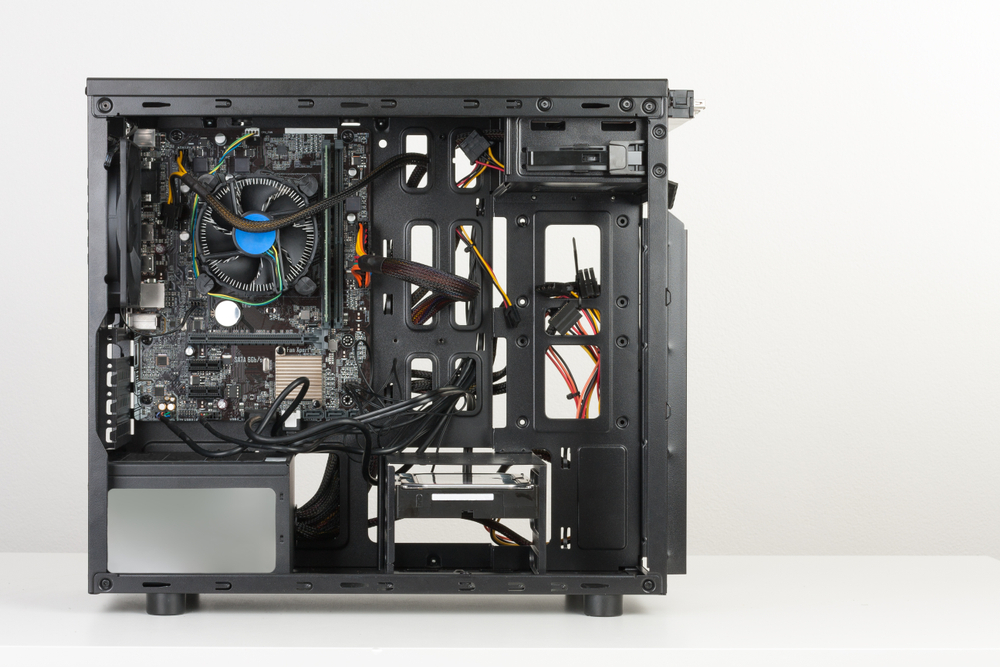Purchasing appropriate PC hardware for work is an investment in a tool you will use for at least four to six years. This article will provide broad, real-world recommendations to people considering purchasing, building, or upgrading workstation motherboards for photogrammetry or other demanding jobs. We’ll also clarify some myths about PC construction and present some tools to get you started.
Gaming PC vs. WorkStation Motherboards
One persistent misunderstanding is that gaming-marketed items are unsuitable for business or other uses. This is entirely false. Gaming serves as a selling factor in product marketing. Video games demand equivalent to 3D rendering or significant computing. If a component is promoted as “gaming,” it is most likely identical in terms of functionality. Such components are frequently over-engineered and may even have some minor benefits.
On the other hand, there are enterprise or workstation-targeted products. Again, knowing which product you require makes little difference. Discrete components or equipment designated “workstation grade” may be better suited for work applications. However, only some people can trust such a label by knowing the precise hardware they are looking for. To summarize, we may overlook the marketing aspect as long as all other elements are equal.
How Can You Get Workstation Motherboards?
Before we discuss the individual components of workstation motherboards, let’s first discuss the primary methods of obtaining a complete system.
- Purchase a branded off-the-shelf workstation motherboard. This is the most straightforward technique for individuals who wish to refrain from giving any thinking or consideration while purchasing PC hardware. This also means you have the least control over the computer’s components and must pay a high price. For large organizations, the significant benefits may be better customer service or more accessible bulk ordering. Otherwise, most of us see no incentive to spend more for inferior gear.
- Choosing components and delegating the construction to a store or boutique contractor. The middle-of-the-road variant. You must set up the PC yourself. However, the store from which you are buying will construct and test the PC. Many shops provide these services and consultations for a modest fee. In addition, some PC manufacturers employ nonproprietary components and charge a fair extra for customer care, warranty, and other services. However, it is better to avoid self-proclaimed premium boutique gaming PC manufacturers, who frequently prioritize aesthetics and further minor details while charging a high price.
- Purchasing components and building the PC yourself. It is the most time-consuming and intricate procedure but with the most control and flexibility. Building a PC is a simple procedure, with plenty of tutorials available on the internet. It may also be a pleasant home or business pastime that takes only a few hours. Finally, as computer construction becomes more popular, you may know someone who has previously built one or two computers and is prepared to assist you.
Work Station Motherboards Components
Whatever road you take, you must be aware of the components that make up the machines you purchase. We will discuss the top three things you should consider for each element and provide our top three specific recommendations you can go right with. However, we will not look at high-end products; our primary objective is to design efficient home or office workstations accessible to consumers and small to medium organizations.
CPU
Let’s start with the core of the computer. The central processor unit is in charge of the majority of a computer’s functions. Having as many cores and threads as feasible for work is ideal. Many threads indicate that the CPU can accomplish a variety of tasks at the same time. Other factors to consider are TDP (thermal design power), which shows how much energy and, hence, cooling the CPUs require, and the availability of integrated graphics. Our top three options for powerful workstation motherboards in 2024 are:
- AMD Ryzen 9 7950X is a 32-thread, high-end CPU from AMD. It is pricey yet powerful, with 170 watts of thermal design power.
- AMD Ryzen 9 7900X is a 24-thread CPU with the same 170-watt TDP as AMD. It is slightly cheaper and less powerful than the previous option.
- Intel Core i7-13700 is a low-cost choice from Intel with 24 less powerful threads and an easy-to-cool 65-watt TDP rating.
These CPUs feature integrated graphics; thus, a GPU is not required to provide a display signal, and you may connect the monitor directly to your motherboard. The CPU will determine your motherboard choice.
The Motherboard
There are too many motherboards, so we’ll keep things simple. The key concern with motherboards is compatibility with your selected CPU and its capabilities. Motherboard features are essentially about connection, such as the number of USB ports, Wi-Fi, Bluetooth, storage, and expansion slots. Overall, mid-range motherboards from trustworthy manufacturers will offer excellent value. Let’s make our choices:
- If you choose the most powerful 7950X CPU, go with a mid-range X670 motherboard. The X670 chipset designation indicates that it is compatible with the most recent Ryzen CPUs (since it has the AM5 CPU socket, which connects a CPU to a motherboard). It will provide the most useful features. Examples are the Asus TUF GAMING X670E-PLUS WIFI, MSI MAG X670E TOMAHAWK WIFI, and ASRock X670E Steel Legend. You may learn more about the components by searching for the precise names shown in bold.
- If you choose the 7900X, you may use the same motherboards stated above because the CPU has the same AM5 socket connection and is compatible with both CPUs. However, you may save money by removing a few unnecessary functions. In such a situation, you can get cheaper versions of the identical motherboards for both CPUs. They will use a less powerful B650 chipset while retaining several critical features. The models are called Asus TUF GAMING B650-PLUS WIFI, MSI MAG B650 TOMAHAWK WIFI, and ASRock B650E STEEL LEGEND WIFI.
Random Access Memory – RAM
The next critical component is RAM. RAM stores data that the CPU works with. The more space you have, the better. RAM has three significant aspects: capacity, transfer frequency, and CAS latency. There are several combinations of these values with varying costs. We studied and discovered the best middle-of-the-road option.
Purchase one or two RAM kits, depending on your budget (you may purchase the second kit later). A kit should have two 32 GB RAM sticks with the DDR5-6000 specification and a CAS latency of 30. As a result, you would have 64 or 128 gigabytes of RAM with a CAS latency of 30 and a transfer rate of 6000 megabytes. These RAM kits are fully compatible with whatever CPU or motherboard combination you choose and will perform flawlessly. The kits’ precise product names are G.Skill Trident Z5 RGB 64 GB (2 x 32 GB) DDR5-6000 CL30 and G.Skill Ripjaws S5 64 GB (2 x 32 GB) DDR5-6000 CL30.
Storage – SSD – HDD
A fast M.2 NVME (or PCIe) SSD drive is required for a boot drive that contains your operating system and, most likely, the apps you’re using. M.2 is the standard connection type, whereas NVME indicates that the drive is fast. We propose purchasing an inexpensive 4 TB drive to provide enough capacity for your program and temporary files during data processing. Here are some excellent options:
- Kingston NV2 4 TB M.2-2280 PCIe 4.0 – a low-cost SSD with lower speed if you plan on reading and writing large amounts of data, but still completely usable.
- The Western Digital Black SN850X 4 TB M.2-2280 PCIe 4.0 SSD drive is a more premium and quicker option at a fair price.
Suppose your specific use case necessitates data archiving and additional bulk storage. You may need to upgrade to high-capacity hard drives if you don’t currently use network or cloud storage. A Seagate Exos X18 18 TB 3.5″ 7200 RPM HDD or a comparable model is a suitable choice. There is minimal difference between brands or models with the same capacity.
Conclusion
Above we have listed what workstation motherboards are and what else you should know to build a workstation motherboard. After reading the above post, if you are willing to build work station motherboards then Direct Macro is the place you should consider, as they have top-notch hardware products.
click here: https://dailytipshive.com/


